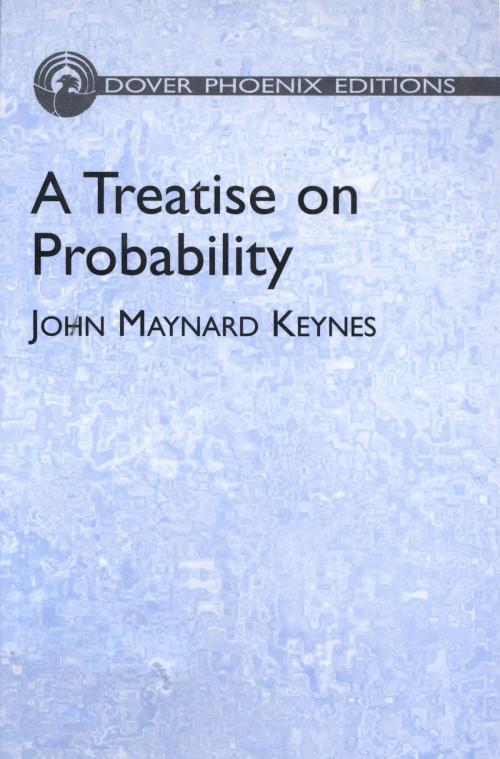| Author: | John Maynard Keynes | ISBN: | 9780486159645 |
| Publisher: | Dover Publications | Publication: | September 2, 2013 |
| Imprint: | Dover Publications | Language: | English |
| Author: | John Maynard Keynes |
| ISBN: | 9780486159645 |
| Publisher: | Dover Publications |
| Publication: | September 2, 2013 |
| Imprint: | Dover Publications |
| Language: | English |
With this treatise, an insightful exploration of the probabilistic connection between philosophy and the history of science, John Maynard Keynes (1883-1946) breathed new life into studies of both disciplines. Originally published in 1921, the famous economist's most important mathematical work represented a significant contribution to the theory regarding the logical probability of propositions. Keynes effectively dismantled the classical theory of probability, launching what has since been termed the "logical-relationist" theory. In so doing, he explored the logical relationships between classifying a proposition as "highly probable" and as a "justifiable induction."
A Treatise on Probability argues that probability is a matter of logic, which renders it objective: a statement involving probability relations possesses a truth value independent of opinion. Keynes demonstrates that if a hypothesis has even the smallest finite probability, it can be transformed into certainty by a sufficient number of observations. This is his attempt to overcome Humean skepticism by asserting that theoretically grounded hypotheses need only exhibit finite probability to form the basis of science and rational action. Another key idea discussed in A Treatise on Probability is that probability relations constitute only a partially ordered set in the sense that two probabilities cannot necessarily always be compared. Keynes further maintains that probability is a basic concept that cannot be reduced to other concepts.
With this treatise, an insightful exploration of the probabilistic connection between philosophy and the history of science, John Maynard Keynes (1883-1946) breathed new life into studies of both disciplines. Originally published in 1921, the famous economist's most important mathematical work represented a significant contribution to the theory regarding the logical probability of propositions. Keynes effectively dismantled the classical theory of probability, launching what has since been termed the "logical-relationist" theory. In so doing, he explored the logical relationships between classifying a proposition as "highly probable" and as a "justifiable induction."
A Treatise on Probability argues that probability is a matter of logic, which renders it objective: a statement involving probability relations possesses a truth value independent of opinion. Keynes demonstrates that if a hypothesis has even the smallest finite probability, it can be transformed into certainty by a sufficient number of observations. This is his attempt to overcome Humean skepticism by asserting that theoretically grounded hypotheses need only exhibit finite probability to form the basis of science and rational action. Another key idea discussed in A Treatise on Probability is that probability relations constitute only a partially ordered set in the sense that two probabilities cannot necessarily always be compared. Keynes further maintains that probability is a basic concept that cannot be reduced to other concepts.















